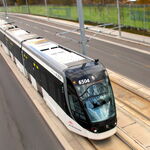afransen
Senior Member
Yes, GO Expansion is pretty exciting if its potential is realized. It's like an express subway to the suburbs. Port Credit and Oakville should both pop significantly. I'm not sure Mississauga can really hold back the immense development pressure there will be in Port Credit (including their ludicrous suggestion that Mineola can't support any additional density).Interestingly, in terms of travel time, it suggests travel times to Pickering and Oakville equal to travelling to York Mills station on the subway, which suggests ~20 minute travel times.
It also suggests destinations like Hamilton being equal to drive times in no traffic, which suggests a 45-50 minute travel time..





